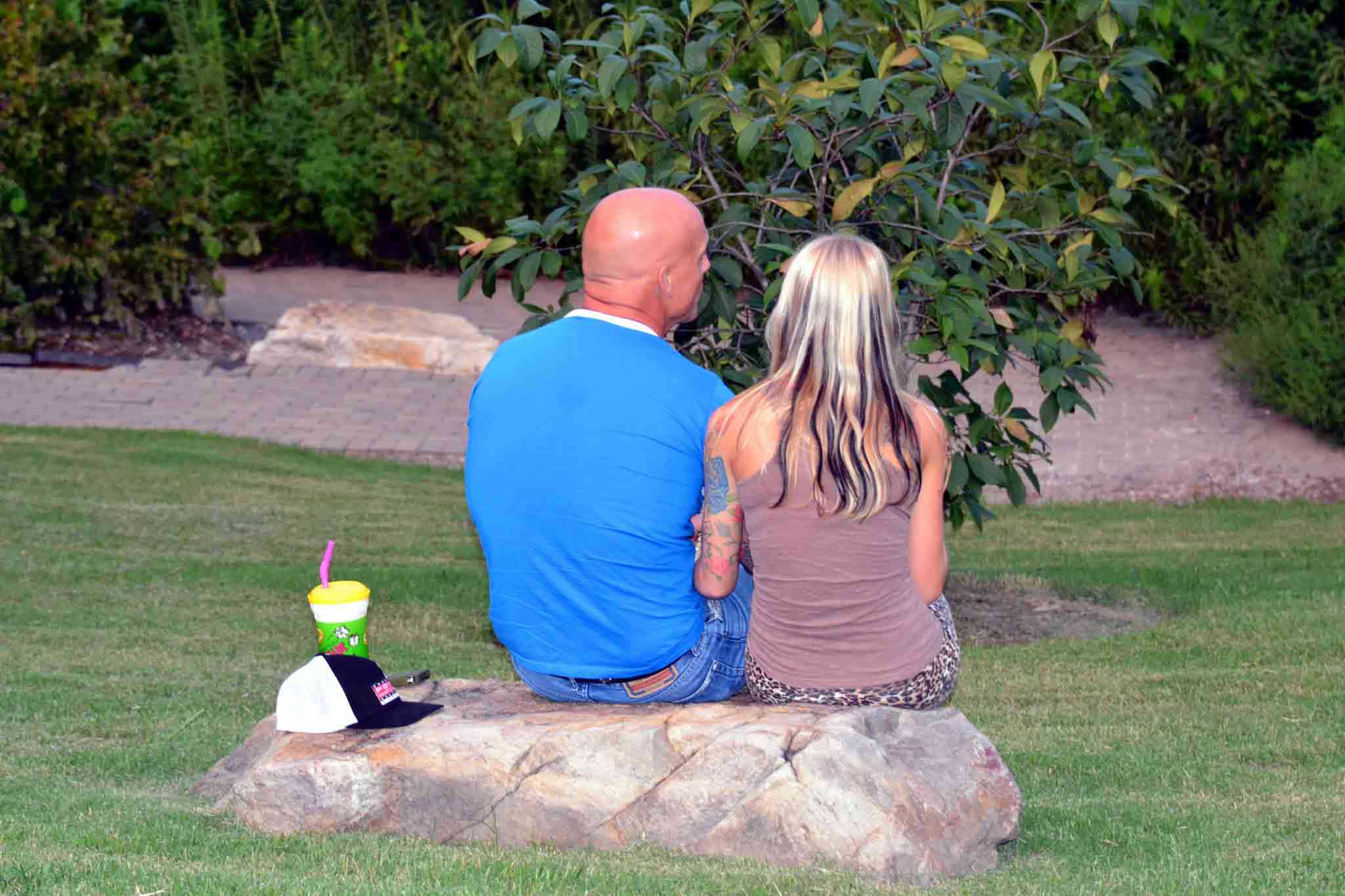Endings and Leavings | Part 3 of a 8-part series on the deeper Self that awakens in laboring through grief, living through loss, and embracing endings as the seedbed of new beginnings.
 All good stories come to an end. What makes the story “good,” however, is not the saccharine, happily-ever-after ending.
All good stories come to an end. What makes the story “good,” however, is not the saccharine, happily-ever-after ending.
The Disney ending is different than the “denouement” of a truly good ending. This old French word denouement, literally untying or “loosening,” is how Christian author and psychologist Dan Allender describes the final part in a narrative arc.
Allender says the stories of our lives tend to unfold in a four-part progression:
1) Shalom – the experience of peace and basic trust with which we all begin.
2) Shalom Shattered – tragedy enters our story; innocence is stolen.
3) Shalom Sought – searching and longing for “home,” only to find the path blocked and the journey detouring into deeper, more disorienting despair; in trying to rescue ourselves, we become lost in a liminal no-man’s land of knotting plotlines.
4) Shalom Restored – the story climaxes and its tensions resolve into a redemptive “denouement”; the knot loosens, the plot is explained, the hero rests.
Somber Wedding Bells
In the fullest meaning of denouement, however, the tension is relaxed but not completely resolved. New meaning emerges, but not at the expense of mystery and wonder and deeper questions. The hero or heroine rests, but then the journey continues. To borrow a theological term, there is still a “peripatetic” movement of one story being folded into others.
Endings and beginnings are clearly marked, yet their grief and celebration are also woven together.
The bipolar culture we live in struggles to accept this woven reality, this liminal tension of coping with grief. It prefers the artificial security and simplistic dualism of “either-or” categories. People, situations, and things are “either” good “or” bad, either black or white.
However, the bells of every wedding should sound a somber note or two. Otherwise, the celebration will ring hollow. And the dirge of every funeral should be spiced with merriment. Lest we forget that death’s shadow is really just a foreshadowing of the life to come.
Bearing and Beautifying Our Scars
We all bear the scars of “shalom shattered” and “shalom sought” in our stories. It’s a question of how we bear this emotional trauma, how we narrate endings and grieve loss, and whether we allow them a part in the redemptive work of becoming.
 When my wife and I married years ago, some friends and family were uneasy with the wedding decor. Strewn among the fresh flowers and symbols of “newness” were other markings: battered and distressed wood. Cracked clay jars and shards of pottery.
When my wife and I married years ago, some friends and family were uneasy with the wedding decor. Strewn among the fresh flowers and symbols of “newness” were other markings: battered and distressed wood. Cracked clay jars and shards of pottery.
I had salvaged the wood from a collapsed, abandoned barn and dragged it through a field. The forearms I blistered would scar and heal, much like the distressed wood would be re-fashioned into a beautiful gate marking the bridal entrance. The pottery shards told the same story: about two imperfect people reclaiming and weaving a broken past into a future “home.” We would not leave certain pieces “back there” in order to step into some lily-white fairy tale of marriage.
It was a tension we chose to visualize in order to share our story as “new,” in the sense that it’s still being written and always open to revision.
Shalom Sought: Seeking Home
Recall from Part 1 the childhood boxes in my parents’ basement, and how my ambivalence about clearing them out protected me from working with a deeper anxiety – about endings both past and pending.
Those boxed mementos were provoking the same despairing, lonely rootlessness – “the shalom shattered” – I had experienced during childhood moves. And now, they were also mingling with fears and questions about my own upcoming family move.
My wife and I were preparing to leave midtown Seattle for its northern hinterlands. Our identity as “city people” was ending. How would we fit into suburbia? How would our kids adjust to new schools? How would we maintain old connections while finding new ones?
To layer in another “leaving”: I needed to reclaim those childhood boxes because my parents were also moving, which for them meant downsizing. Their new house was only 70 miles north up Pennsylvania’s Route 222 – but it was to a city I’ve never known or called home. The familiar background was falling out of my childhood picture frame.
After 50 years my parents were migrating back to their birthplace, back to siblings and relatives in Allentown. Mom was calling it “our last move.” Her words echoed back to me in the Pacific Northwest, and here in salmon country, I could clearly hear the euphemism.
They were going home to die.
Grief and Trauma: To Tell or Sabotage Our Stories
 As adults, we carry within us younger “parts” of ourselves that are emotionally stuck in the past. Often these younger selves still feel buried by certain traumatic endings suffered in childhood, and by losses suffered alone – in that the adults around us could not “co-narrate” our story. In other words, they lacked language or awareness for how to step into our emotional experience and co-create meaning, understanding and safe connection.
As adults, we carry within us younger “parts” of ourselves that are emotionally stuck in the past. Often these younger selves still feel buried by certain traumatic endings suffered in childhood, and by losses suffered alone – in that the adults around us could not “co-narrate” our story. In other words, they lacked language or awareness for how to step into our emotional experience and co-create meaning, understanding and safe connection.
My parents were both products of profoundly broken, isolating childhood homes – where wounded and hardened adults had failed to narrate and take ownership of family tragedies. Shalom was shattered, home was abandoned, shame moved in.
Mom and Dad grew up, married and moved away. They boxed up their childhoods and vowed to “do things differently.” And so they did, in many ways. But going home for visits was never easy, because they’d never unpacked the shame they still carried from those old stories. Those generations chose to simply “move on.” Or, so people thought.
Children who brave endings alone often become adults who sabotage them.
Christian Counseling: How (S)endings Emerge From Endings
In Part 4 of this series, we’ll explore the difference between sabotaging endings and embracing them – the “well-ending” work of grieving, celebrating and ritualizing. Because how you end portends how you’ll begin again.
Coping with grief in healthy ways allows us to “come home” to our true Selves – as ancient Christian mystics have put it – reflecting on God’s conforming work in us.
The home-coming that occurs through well-ending is also the work of “sending.” It helps a person to identify the emerging Self that is being sent into the world.
Allender, Dan. (2005). To Be Told: God Invites You to Co-Author Your Future. Colorado Springs, CO: WaterBook Press.Photos
“Barn Hinge,” courtesy of Richard BH, Flickr CreativeCommons (CC BY 2.0); “shard,” courtesy of molybdena, Flickr CreativeCommons (CC BY 2.0); “first rain,” courtesy of Robert C




